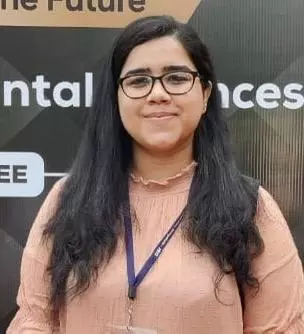- Home
- Medical news & Guidelines
- Anesthesiology
- Cardiology and CTVS
- Critical Care
- Dentistry
- Dermatology
- Diabetes and Endocrinology
- ENT
- Gastroenterology
- Medicine
- Nephrology
- Neurology
- Obstretics-Gynaecology
- Oncology
- Ophthalmology
- Orthopaedics
- Pediatrics-Neonatology
- Psychiatry
- Pulmonology
- Radiology
- Surgery
- Urology
- Laboratory Medicine
- Diet
- Nursing
- Paramedical
- Physiotherapy
- Health news
- Fact Check
- Bone Health Fact Check
- Brain Health Fact Check
- Cancer Related Fact Check
- Child Care Fact Check
- Dental and oral health fact check
- Diabetes and metabolic health fact check
- Diet and Nutrition Fact Check
- Eye and ENT Care Fact Check
- Fitness fact check
- Gut health fact check
- Heart health fact check
- Kidney health fact check
- Medical education fact check
- Men's health fact check
- Respiratory fact check
- Skin and hair care fact check
- Vaccine and Immunization fact check
- Women's health fact check
- AYUSH
- State News
- Andaman and Nicobar Islands
- Andhra Pradesh
- Arunachal Pradesh
- Assam
- Bihar
- Chandigarh
- Chattisgarh
- Dadra and Nagar Haveli
- Daman and Diu
- Delhi
- Goa
- Gujarat
- Haryana
- Himachal Pradesh
- Jammu & Kashmir
- Jharkhand
- Karnataka
- Kerala
- Ladakh
- Lakshadweep
- Madhya Pradesh
- Maharashtra
- Manipur
- Meghalaya
- Mizoram
- Nagaland
- Odisha
- Puducherry
- Punjab
- Rajasthan
- Sikkim
- Tamil Nadu
- Telangana
- Tripura
- Uttar Pradesh
- Uttrakhand
- West Bengal
- Medical Education
- Industry
American Academy of Paediatrics Announces its First Clinical Practice Guideline for Opioid Prescriptions - Video
|
Overview
The American Academy of Pediatrics has published its first clinical guideline for pediatricians on prescribing opioids, including explicit instructions on how and when to prescribe these medications for pain while reducing the long-term risk of addiction.
The “Clinical Practice Guideline: Opioid Prescribing for Acute Pain Management in Children and Adolescents in Outpatient Settings” marks a shift in clinical practice by also recommending a routine prescription for naloxone—a medication used to reverse overdoses—alongside every opioid prescription.
“There’s been a big pendulum swing in the practice of medicine over the last two decades—first with opioid-overprescribing, then with a huge cutback in opioid prescribing, likely leaving some children’s pain undertreated,” said Scott Hadland, MD MPH MS, FAAP, lead author of the guideline. “We want pediatricians to prescribe opioids when they’re needed because untreated pain can lead to distress and psychological harm. At the same time, physicians need to take steps that reduce the long-term risk for addiction.”
The AAP clinical practice guideline recommends:
• Pediatricians can and should prescribe opioids. However, they should do so in conjunction with other non-pharmacological approaches, such as physical therapy, to reduce pain and improve function. They should also be prescribed alongside other non-opioid medications, including acetaminophen and ibuprofen.
• Every prescription for opioids should also include a prescription for naloxone, an overdose reversal medication. This is key to treating overdose in anyone in the household who takes too much opioid medication—not only the child to whom the medication is prescribed, but other family members, including younger children in the house.
• All children and teens should have equitable access to effective pain treatment. Black, Hispanic, and American Indian and Alaska Native individuals are less likely than white individuals to receive timely and effective pain management (including with opioids), even after accounting for the level of pain across a range of pain conditions—many of which result in severe acute pain.
• Patients and caregivers should be given educational materials on pain control therapies, opioids, and safe storage and disposal of medications. They should also receive teaching on how to recognize the signs of an opioid overdose and how to intervene.
• AAP outlines several restrictions around prescription of codeine and tramadol, which are only FDA-approved for use in adults. They should not be prescribed in children younger than 12; in patients ages 12-18 with certain chronic conditions; in patients younger than 18 after tonsillectomy or adenoidectomy; or in patients who are breastfeeding.
The clinical guideline contains 12 key action statements based on evidence from randomized controlled trials, high-quality observational studies, and, when studies were lacking or could not feasibly or ethically be conducted, from expert opinion. Each key action statement includes a level of evidence, the benefit-harm relationship, and the strength of recommendation.
AAP urges additional research into ideal dosing and duration of treatment with opioids in pediatric populations.
Reference: Hadland SE, Agarwal R, Raman SR, Smith MJ, Bryl A, Michel J, Kelley-Quon LI, Raval MV, Renny MH, Larson-Steckler B, Wexelblatt S, Wilder RT, Flinn SK. Opioid Prescribing for Acute Pain Management in Children and Adolescents in Outpatient Settings: Clinical Practice Guideline. Pediatrics. 2024 Sep 30:e2024068752. doi: 10.1542/peds.2024-068752. Epub ahead of print. PMID: 39344439.



